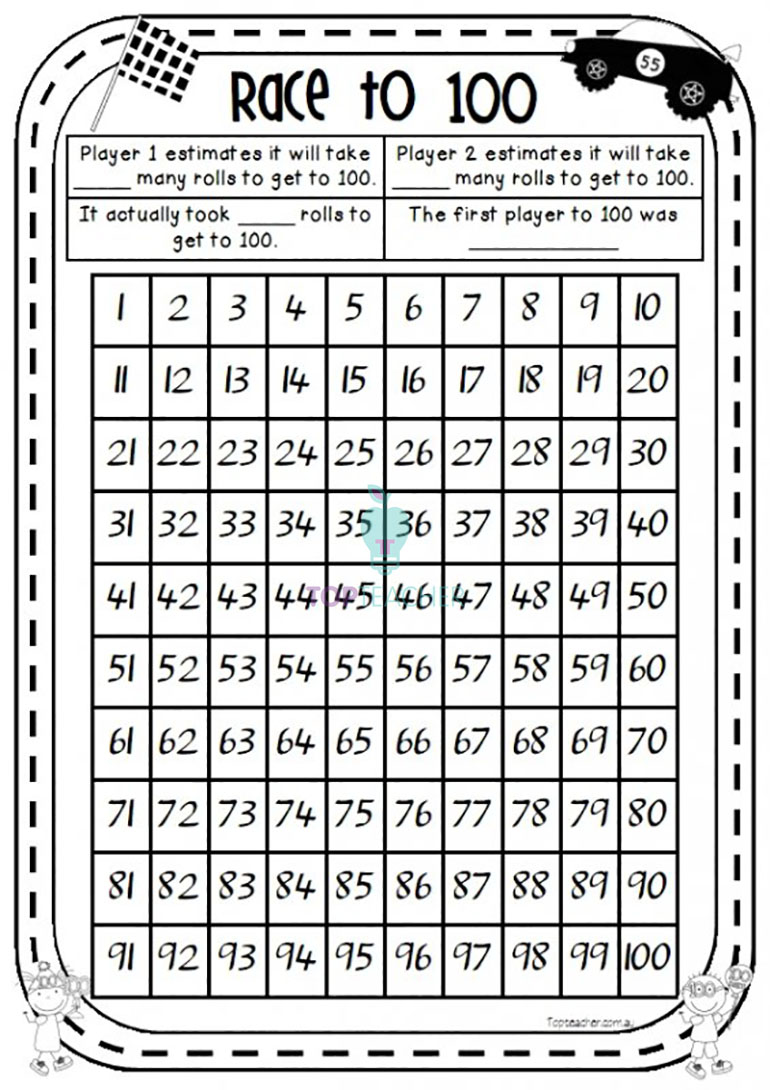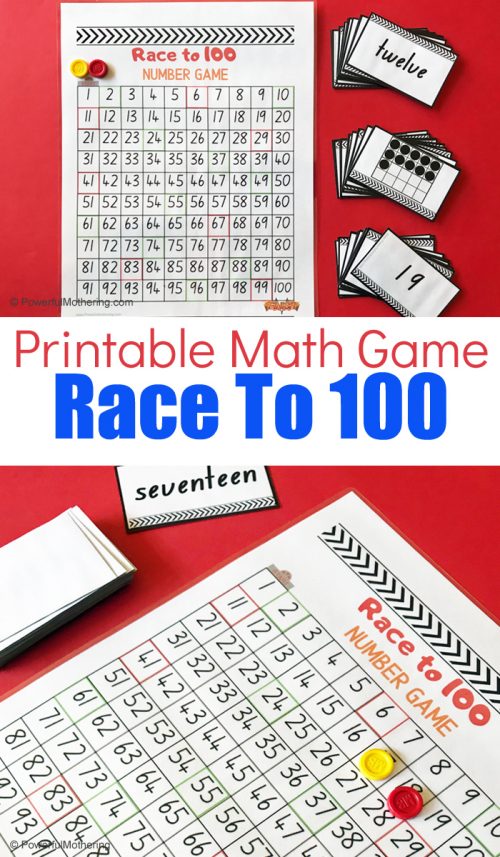Race To 100 Math Game
Race to 100 Math Game: A Fun and Engaging Way to Learn Numbers
Math can be a challenging subject for many students, and traditional methods of drilling numbers can lead to boredom and disengagement. This is where Race to 100 Math Game comes into play, as a creative and enjoyable way to learn numbers. By turning math into a friendly competition, this game can help students improve their number sense skills and deepen their understanding of basic math concepts.
Without even realizing it, kids can struggle with basic numeracy concepts like counting and adding. This can be frustrating for both students and teachers. Race to 100 Math Game addresses these pain points by offering a way to teach basic math concepts through play. Through friendly competition and a fun game format, students can improve their counting and adding skills, and become more competent in math without even realizing they are learning.
The target of Race to 100 Math Game is to help students improve their understanding of basic numeracy concepts, such as counting, adding, and number sense. This game is appropriate for young students who are just starting to learn math and can benefit from a fun, engaging approach to learning these concepts. It is also useful for students who may be struggling with traditional methods of numeracy learning, as it provides a new and exciting way to master these important math skills.
In summary, Race to 100 Math Game is a fun and engaging way for students to learn basic math concepts and improve their numeracy skills. By using a game format to teach counting, adding, and number sense, students can enjoy learning and become more confident in their math abilities. With the use of this game, teachers can make learning math a fun and engaging experience for their students.
Race to 100 Math Game: Getting Started
At its core, Race to 100 Math Game is a simple game that involves two players, a 100 chart, and two dice. Players take turns rolling the dice and moving along the chart, with the first player to reach 100 declared the winner. However, there are a few ways to customize this game and make it even more engaging for students.
My personal experience with Race to 100 Math Game has been overwhelmingly positive. As a teacher, I have seen my students become more engaged and excited about math through playing this game. They enjoy the friendly competition, the chance to test their skills against their classmates, and the feeling of accomplishment when they finally reach 100.
Additionally, Race to 100 Math Game allows me to differentiate instruction for my students. For example, I can modify the game to make it easier or more challenging, depending on the skill level of each student. This way, everyone can participate and learn at their own pace.
Race to 100 Math Game: Benefits and Importance
Race to 100 Math Game offers numerous benefits for students, including improved numeracy skills, enhanced learning engagement, and a sense of accomplishment. It also builds important life skills, such as critical thinking, strategic planning, and problem-solving. Moreover, it offers an alternative approach to traditional math instruction, making it more accessible and less intimidating for many students.
Race to 100 Math Game: Customizing the Game
The basic version of Race to 100 Math Game is simple, but teachers can customize and adapt the game to fit the needs of their students. For example, they may choose to use different types of dice or use larger or smaller number charts. They may also modify the game rules to make it more age or skill-appropriate.
Race to 100 Math Game: Tips for Teachers
When implementing Race to 100 Math Game in the classroom, it is important for teachers to establish clear expectations, rules, and guidelines for playing the game. This ensures that all students have equal opportunities to participate and learn, and reduces any potential confusion or frustration during gameplay.
Race to 100 Math Game: Q&A
Q: What age group is Race to 100 Math Game suitable for?
A: Race to 100 Math Game is ideal for young students who are just starting to learn numeracy concepts.
Q: Can Race to 100 Math Game be easily modified?
A: Yes, teachers can easily customize and adapt the game to fit their students' needs.
Q: What skills do students learn through playing Race to 100 Math Game?
A: Students improve their numeracy skills, critical thinking, strategic planning, and problem-solving skills through playing Race to 100 Math Game.
Q: How can Race to 100 Math Game benefit struggling learners?
A: By using a fun, game-based approach to numeracy learning, Race to 100 Math Game can make math more accessible and less intimidating for struggling learners, helping them become more confident in their math abilities.
Conclusion of Race to 100 Math Game
Race to 100 Math Game is a fun and effective way for young students to learn basic numeracy skills like counting and adding. By using an engaging game-based format, teachers can make math more accessible and enjoyable for all students. Whether they are struggling with math or simply looking for a new and exciting way to learn, Race to 100 Math Game can help students improve their math skills, build important life skills, and develop a lifelong love of learning.
Gallery
Race To 100 Math Game - Firstgraderoundup

Photo Credit by: bing.com / race 100 math game play
Race To 100 Math Game - Firstgraderoundup

Photo Credit by: bing.com /
Race To 100: A Printable Math Game For Learning Number Sense

Photo Credit by: bing.com /
Dice Race To 100 | Top Teacher

Photo Credit by: bing.com /
Race To 100: A Printable Math Game For Learning Number Sense

Photo Credit by: bing.com /
